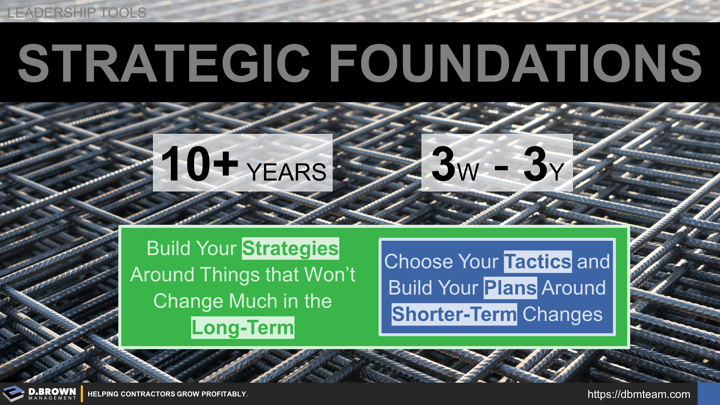The term leadership is often mistaken for the "People Skills" required by all levels of management. Leadership's role is about seeing the long-term changes in the external environment then aligning the team around those changes. Management's role is coping with the complexity of getting there. Management must constantly adjust their tactics, plans, systems, procedures, and tools to cope with shorter-term changes internally and externally. Learn more: Management and Leadership (Similarities and Key Differences)
Jeff Bezos
I very frequently get the question: What's going to change in the next 10 years?
And that is a very interesting question. It's also a very common one.
I almost never get the question: What's not going to change in the next 10 years?
And I submit to you that the second question is actually the more important of the two -- because you can build a business strategy around the things that are stable in time.
Learn More: Invent & Wander - The Collective Writings of Jeff Bezos
What Will Not Change in the Construction Industry in the Next 10+ Years?
This is the question that you should be working on deeply with your leadership team, board, and advisors as applicable. Don't work on any of the five strategic questions at this time, just focus on clarifying what is unlikely to change much given a 10-plus year time horizon.
Below are a few starting points. You will have to adjust them to fit your business.
- New construction programs and projects will continue to be larger and more complex, leveraging new technologies and economies of scale. These will require contractors, joint ventures, and delivery methods that can operate at that scale and across the geographies required by those project owners.
- Significant investments will be made in infrastructure and localizing more of the supply chain to mitigate impacts we saw during COVID and for national security reasons.
- There will continue to be large amounts of private capital available for investment with the construction industry attracting plenty of that capital due to its size and connection across all other industry sectors.
- Project delivery methods will continue to become more integrated, which is largely a reversion back to the models used in the early 1900s. (Construction Manager at Risk (CMAR), Integrated Project Delivery (IPD), Design-Build (DB), Public-Private Partnership (PPP), etc.)
- Safety and quality standards will continually move higher.
- Government regulation will continue to increase with population density and the size of the economy.
- Cost and schedule are always competitive points starting with the customer's business model and how they will be using the finished construction project as part of their business.
- Continued proliferation of technology focused on the construction industry - nearly all with good concepts and intent but most without integration, total positive impact (suboptimization vs. system optimization), or longevity.
- Labor shortages - especially at the management and leadership levels.
- Maintenance and modernization of older buildings and infrastructure will always be needed.
- There will be economic cycles lasting about a decade where the total market will shrink with more emphasis on smaller projects, maintenance, and modernization. This may or may not hit all industry sectors at once, but it will hit every sector eventually.
- The basics of human nature such as Maslow’s Hierarchy of Needs and a growing responsibility for the management structures of businesses to help meet those needs.
This is not meant to be an all-inclusive list, nor one that fits every contractor. Hopefully this list helps get you started as you think about the most highly leveraged choices that leaders make.
Once your strategies are in place, a viable business model must be developed along with supporting management systems. These are adjusted much more frequently to cope with the complexity of the external environment on the short and mid-term. These will range from:
- 3-Week Short-Interval Plans (SIPs) on projects from Foremen and Project Managers.
- 1-Year operational budgets from accounting and key managers.
- 1-Year project forecasts from Project Executives integrating project backlog and opportunity pipelines.
- 3-Year business plans from VPs integrating strategy, business development, key hires, and improvement projects.

